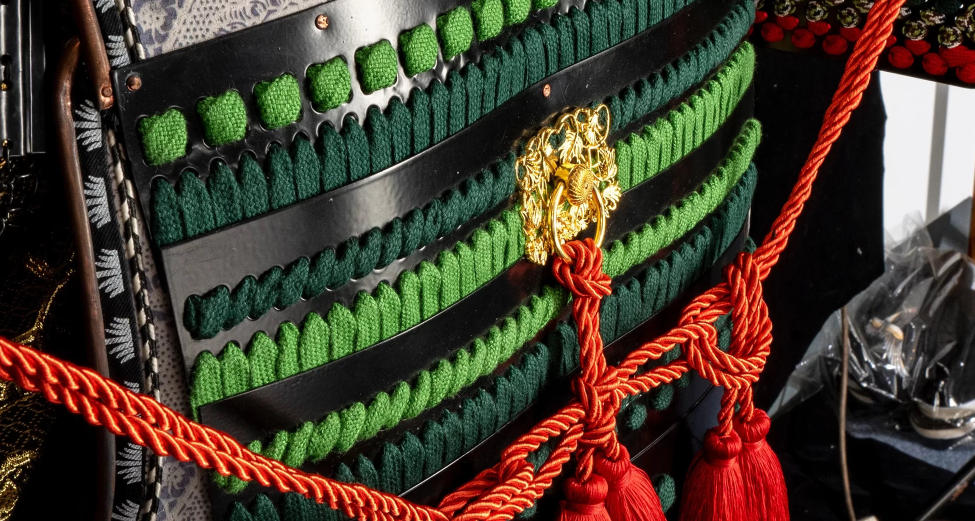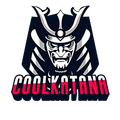Oda Clan Black & Green Samurai Armor – Sengoku Era Glory Revived

How the Oda Clan Black & Green Samurai Armor Revives the Spirit of Japan’s Sengoku Warriors
In the flames of Japan’s Sengoku period, armor was more than a warrior’s protection—it was a symbol of identity, belief, and honor. Today, the Handmade Life-Size Oda Clan Samurai Armor – Kachi Black & Green Yoroi faithfully revives the grandeur of the Oda Clan with exquisite craftsmanship and historical accuracy. It offers collectors and history enthusiasts an immersive cultural experience that transcends time.
How Powerful Was the Oda Clan?
1. The Oda Clan and the Glory of the Sengoku Era
The Oda Clan (織田家族) was one of the most influential samurai families of Japan’s Warring States period. Their family crest, the mokko mon, symbolizes nobility and authority. As one of the “Three Great Unifiers of Japan,” Oda Nobunaga was a visionary strategist and a reformer who transformed the course of Japanese history.
He was not only a military genius but also a pioneer who broke the feudal order and paved the way toward modernization. With his slogan “Tenka Fubu” (Rule the Realm by Force), Nobunaga sought to unify the nation through strength, embodying decisive leadership and unmatched courage—making him an enduring symbol of samurai legend.
The Oda Clan reached its height of power in the mid-16th century. Under Nobunaga’s leadership, it nearly reshaped Japan’s destiny.
Before Nobunaga’s rise, Japan was fractured by endless feudal wars. Yet from the province of Owari (modern-day Aichi), Nobunaga rose through military brilliance, innovative tactics, and bold reforms. He unified central Japan and marched toward Kyoto, asserting control over the shogunate and imperial court.
The clan’s strength was reflected not only in military might but also in political and economic influence:
-
Military Power: Nobunaga was the first Japanese warlord to introduce firearms (arquebuses) in large-scale battle, revolutionizing traditional samurai warfare and greatly improving battlefield efficiency.
-
Political Reform: He weakened Buddhist temple armies, restructured land administration, and centralized power—laying the foundation for the later unification of Japan by Toyotomi Hideyoshi and Tokugawa Ieyasu.
-
Economic and Cultural Impact: Nobunaga promoted commerce, expanded castle towns, and fostered urban growth, fueling Japan’s economic prosperity and cultural renaissance.
Among all feudal lords of the Sengoku era, the Oda Clan stood out as one of the most revolutionary and influential families. Though Nobunaga ultimately fell during the Honnoji Incident, his vision and reforms permanently reshaped Japan’s political and cultural landscape. Even today, the Oda name remains synonymous with the dawn of Japan’s unification and the spirit of ambition that defined a new age.
The Oda samurai were known for their fearlessness and discipline, and their samurai armor represented both power and honor. Unlike other clans that favored softer hues, the Oda Clan’s iconic black and green armor embodied a balance of strength and vitality—black for resilience, authority, and strategic calm; green for loyalty, vitality, and unyielding resolve.
This striking contrast was both visually commanding and spiritually symbolic, capturing the indomitable will of Japan’s warrior class.
The Kachi Yoroi (勝铠) in black and green perfectly embodies this spirit. Every steel plate, silk cord, and lacquer finish carries deep historical symbolism and Sengoku-era aesthetics:
-
The Dō (chest armor) features layered steel plates for unparalleled defense.
-
The Sode (shoulder guards) convey authority and battlefield presence.
-
The Kabuto (samurai helmet), adorned with horn-like crests, symbolizes divine protection and valor.
-
The alternating black and green Kusazuri (armor skirt) reflects the Oda Clan’s wisdom in balancing strategy and strength.
Standing before the Oda Clan Kachi Black & Green Samurai Armor, one can feel the aura of iron and honor from the Sengoku battlefields—a living embodiment of the samurai’s devotion and sacrifice.
This is not merely protective armor; it is history forged in steel, a legacy of faith and courage, and a reminder that the Bushido spirit still endures in the modern age.
2. The Fusion of Traditional Craftsmanship and Modern Handwork
The Handmade Oda Clan Kachi Black & Green Samurai Armor is the perfect union of traditional Japanese craftsmanship and modern artisan precision. Each armor is personally crafted by skilled Katchū-shi (armor makers), following historical forging rituals that date back centuries. From metal forging, lacquering, and leather treatment to silk braiding, every step is meticulously executed to reproduce the texture, color, and presence of true Sengoku-era armor.
In the Japanese tradition of armor-making, craftsmen are not merely artisans—they are cultural guardians. They embody the aesthetics of wabi-sabi (beauty in imperfection) and mono no aware (the poignancy of things), merging steel and silk into harmony between strength and grace.
-
Material Selection:
The armor’s body is forged from high-strength steel, polished and finished with multiple layers of lacquer for durability and a refined, aged patina. The silk cords (odoshi) are hand-dyed and woven from premium silk, giving a smooth texture and vivid color. This combination preserves the lightweight flexibility of traditional Japanese samurai armor while enhancing its longevity and display value for modern collectors. -
Helmet Design (Samurai Kabuto Helmet):
The Kabuto, often regarded as the soul of the samurai, follows the Hineno Zunari Kabuto style typical of the Sengoku era. Its curved black-and-green silhouette exudes strength and authority. The horned crest (Maedate) atop the helmet symbolizes divine courage and warrior protection. Each layer of lacquer is carefully polished to achieve a deep metallic sheen, transforming it into a true crown of war. -
Shoulder Guards and Chestplate (Samurai Armor Chestplate):
The Sode (shoulders) and Dō (chestplate) use overlapping steel plates connected by silk cords—a hallmark of traditional Japanese armor craftsmanship. The black-and-green gradient represents solemn dignity and battle readiness, reflecting the Oda philosophy of “hidden edge within calmness, strength within elegance.” -
Cord Detailing:
Every braid and knot (Odoshi) is woven by hand using traditional “straight” and “cross-binding” techniques. Beyond strength, these cords symbolize unity, loyalty, and eternal brotherhood among samurai. The intricate weaving reflects the Bushido code—that even beneath cold steel, there lies an unwavering heart of honor.
This life-size samurai armor is not just a collectible—it is a wearable historical artwork. Up close, one can admire the delicate interplay of steel, lacquer, and silk; from afar, its commanding silhouette radiates the power and dignity of a Sengoku warrior.
Each armor undergoes dozens of hand-forging and polishing steps, each detail imbued with the soul of its maker. It is this philosophy—'forging loyalty through craftsmanship'—that makes the Oda Clan Kachi Black & Green Samurai Armor a perfect harmony of tradition and innovation, function and artistry, strength and beauty.
More than a reconstruction of a warrior’s armor, it is a bridge connecting past and present—a tangible reminder of Japan’s glorious era of courage, discipline, and honor.









